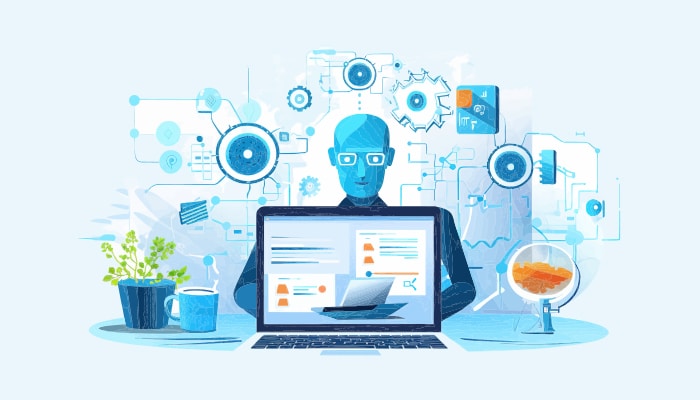Introduction
Transcription is the process of converting spoken language into written text. Its importance spans various fields, including academia, legal proceedings, healthcare, and media. Accurate transcription preserves and disseminates information, facilitates communication, and enables analysis and documentation. In academic research, for instance, transcription ensures the preservation of interviews, focus group discussions, and lectures, facilitating the analysis of qualitative data. In legal contexts, transcripts are crucial for record-keeping and reference during trials. Similarly, in healthcare, medical transcription ensures accurate documentation of patient encounters, aiding in diagnosis and treatment planning. Overall, transcription serves as a vital tool for archiving, analysis, and communication in numerous domains.
Manual transcription methods have historically relied on human typists listening to audio recordings and transcribing them verbatim. While this approach ensures accuracy, it is time-consuming, labor-intensive, and prone to human error. Manual transcription also lacks scalability, making it impractical for large volumes of audio data.
Technological advancements have revolutionized transcription practices, introducing automated and semi-automated solutions. Speech recognition software, powered by machine learning algorithms, can transcribe audio recordings rapidly and with reasonable accuracy. Additionally, natural language processing (NLP) techniques enhance the accuracy of transcription by contextualizing speech and improving language understanding. These technological advancements have significantly increased transcription efficiency, scalability, and accessibility, transforming how organizations and individuals approach transcription tasks.
Manual Typing Era
- Historical Context of Manual Transcription
Manual transcription, or the act of converting spoken words into written text, has a rich historical context spanning millennia. Before the advent of modern technology, scribes meticulously recorded information by hand, whether in the form of manuscripts, scrolls, or inscriptions on various materials like stone or clay tablets. With the invention of the printing press in the 15th century, the demand for transcribing texts surged, leading to the emergence of specialized professions such as clerks and typists.
- Challenges and Limitations of Manual Typing
Manual typing presented numerous challenges and limitations. Accuracy was paramount, yet human error was inevitable, leading to typos and inconsistencies. Transcribing lengthy or complex texts was time-consuming and physically demanding, often resulting in fatigue and reduced productivity. Additionally, legibility could vary greatly depending on the typist’s skill level, handwriting, or typing speed, leading to difficulties in deciphering poorly transcribed documents.
- Role of Typewriters and Shorthand in Transcription
Typewriters revolutionized manual transcription by offering a standardized method of producing printed text. They increased efficiency and legibility while reducing errors compared to handwriting. Shorthand systems further expedited transcription by enabling typists to record spoken words in abbreviated form, significantly increasing their transcription speed. These tools were especially vital in fields such as journalism, law, and administration, where accurate and timely documentation was essential.Together, manual transcription, typewriters, and shorthand systems formed the backbone of written communication for centuries, laying the foundation for the automated transcription technologies we rely on today.
Emergence of Digital Transcription
- Introduction of Digital Recording Devices
The emergence of digital transcription began with the advent of digital recording devices. Unlike analog methods, digital devices offered higher fidelity, ease of use, and greater storage capacity. This shift enabled professionals, such as medical practitioners, journalists, and legal experts, to record meetings, interviews, and dictations conveniently and with higher quality.
- Initial Attempts at Digital Transcription Software
Early digital transcription software aimed to automate the conversion of recorded audio into text. These systems employed basic algorithms to recognize and transcribe speech, albeit with limited accuracy. They marked the initial steps towards streamlining the transcription process, reducing reliance on manual typing.
- Advantages Over Manual Typing
Digital transcription presented numerous advantages over manual typing. It significantly reduced transcription time, allowing for faster document turnaround. Moreover, it minimized the risk of errors inherent in manual transcription, improving overall accuracy. Additionally, digital formats facilitated easier storage, retrieval, and sharing of transcribed documents.
- Limitations and Challenges Faced in Early Digital Transcription
However, early digital transcription systems encountered notable limitations and challenges. These included inaccuracies in speech recognition, especially with accents, background noise, or technical glitches. Furthermore, the initial software lacked the contextual understanding necessary to accurately transcribe complex language nuances or specialized terminology. As a result, human intervention remained essential for reviewing and correcting transcription errors, limiting the full automation potential of early digital transcription technologies.
Evolution of AI-Powered Transcription
- Introduction To AI and Its Application in Transcription
The advent of Artificial Intelligence (AI) has revolutionized various industries, including transcription. AI-powered transcription uses algorithms and machine learning techniques to convert audio files into text accurately and efficiently. This technology has significantly reduced the time and effort required for transcribing interviews, meetings, lectures, and other audio recordings.
- Development of Speech Recognition Technology
Speech recognition technology has played a pivotal role in the evolution of AI-powered transcription. Over the years, significant advancements in this technology, driven by deep learning algorithms and neural networks, have enhanced the accuracy and speed of transcribing spoken language into text. Improved speech recognition models can now understand various accents, dialects, and languages, making transcription services more accessible and inclusive.
- Machine Learning Algorithms and Their Role in Transcription Accuracy
Machine learning algorithms, particularly deep learning models like recurrent neural networks (RNNs) and convolutional neural networks (CNNs), have contributed to the enhancement of transcription accuracy. These algorithms learn patterns and structures from vast amounts of training data, enabling them to recognize speech nuances and context, resulting in more precise transcriptions with fewer errors.
- Integration of Natural Language Processing (NLP) for Context Understanding
The integration of Natural Language Processing (NLP) techniques has further improved the quality of AI-powered transcription. NLP algorithms analyze the semantic and syntactic structure of language, allowing transcription systems to better understand context, grammar, and intent. This enables them to produce transcripts that not only accurately reflect the spoken words but also convey the intended meaning and nuances.
- Rise of Cloud-Based Transcription Services
The rise of cloud-based transcription services has made AI-powered transcription more accessible and scalable. These services leverage cloud computing infrastructure to process large volumes of audio data rapidly and deliver transcriptions in real-time or with minimal delay. Additionally, cloud-based solutions offer flexibility, allowing users to transcribe audio from any device connected to the internet, further democratizing access to transcription technology.
Advantages of AI-Powered Transcription
- Speed and Efficiency Improvements
AI-powered transcription offers remarkable speed and efficiency improvements over manual transcription methods. With advanced algorithms and machine learning models, AI systems can transcribe audio files at a much faster rate than human transcriptionists. This rapid turnaround time enables businesses and professionals to process large volumes of audio data quickly, leading to enhanced productivity and streamlined workflows. Additionally, AI transcription tools often come equipped with features like batch processing, allowing users to transcribe multiple files simultaneously, further boosting efficiency.
- Increased Accuracy and Reduced Error Rates
One of the most significant advantages of AI-powered transcription is its ability to deliver higher accuracy and lower error rates compared to manual transcription services. Machine learning algorithms continuously learn from vast amounts of data, enabling them to recognize speech patterns, accents, and language nuances with great precision. As a result, AI transcription systems can produce transcripts that are highly accurate, minimizing the need for extensive proofreading and editing. This increased accuracy ensures that important information is captured correctly, reducing the risk of misunderstandings or misinterpretations.
- Scalability and Flexibility in Handling Various Audio Formats
AI-powered transcription solutions offer scalability and flexibility, allowing them to handle a wide range of audio formats with ease. Whether it’s recorded meetings, interviews, phone calls, or dictations, AI transcription tools can process diverse audio sources efficiently. Moreover, these systems can adapt to different languages and dialects, making them suitable for international use. This scalability and flexibility empower businesses and individuals to transcribe audio content from various sources without the need for multiple transcription tools or services, simplifying the transcription process and saving time.
- Cost-Effectiveness Compared to Manual or Human Transcription Services
AI-powered transcription is significantly more cost-effective than manual or human transcription services. While traditional transcription methods often require hiring skilled professionals and paying them by the hour, AI transcription tools operate on a subscription or pay-per-use basis, offering predictable and affordable pricing models. This cost-effectiveness allows businesses to reduce transcription expenses without compromising on quality or turnaround time. Additionally, AI transcription eliminates the need for extensive training and supervision of transcriptionists, further reducing overhead costs. Overall, AI-powered transcription provides a cost-efficient solution for organizations seeking accurate and timely transcription services.
- Applications and Implications
- The impact of AI transcription on various industries like healthcare, legal, media, and academia is profound. In healthcare, AI transcription facilitates accurate and efficient documentation of patient-doctor interactions, aiding in better diagnosis and treatment. Legal firms benefit from streamlined documentation processes, enabling faster case preparations and improved compliance. Media outlets utilize AI transcription to transcribe interviews, podcasts, and video content, enhancing accessibility and searchability. Academia leverages AI transcription for transcribing lectures, interviews, and research data, easing information dissemination and analysis.
- AI transcription offers significant accessibility benefits for individuals with disabilities. Deaf or hard-of-hearing individuals can access spoken content through accurate transcriptions, promoting inclusivity in various contexts such as lectures, meetings, and media content. Additionally, visually impaired individuals benefit from text-based transcriptions of audio content, enabling them to consume information through screen readers or Braille displays.
- Potential challenges and ethical considerations of AI transcription include concerns regarding privacy, data security, and accuracy. Issues may arise regarding the handling of sensitive information during transcription processes, necessitating robust privacy protocols. Moreover, ensuring the accuracy of transcriptions, particularly in legal or medical contexts, is crucial to prevent misinformation or misinterpretation.
- Future possibilities and developments in transcription technology involve advancements in natural language processing (NLP) and machine learning algorithms. These advancements may lead to even more accurate and contextually aware transcriptions, capable of understanding nuances like accents, colloquialisms, and technical jargon. Furthermore, integration with other AI technologies such as sentiment analysis and summarization could enhance the value of transcriptions for various applications, including market research, sentiment analysis, and content generation. Overall, the future of transcription technology holds promise for further improving efficiency, accuracy, and accessibility across diverse sectors.
Conclusion
The evolution of transcription technology to AI-powered solutions has revolutionized how we capture, process, and utilize spoken language. With remarkable speed, accuracy, scalability, and cost-effectiveness, AI transcription offers transformative applications across industries like healthcare, legal, media, and academia. While presenting ethical considerations and challenges, such as privacy and accuracy validation, the future promises even greater advancements driven by natural language processing and machine learning, ensuring improved efficiency, accuracy, and accessibility in transcription services.







